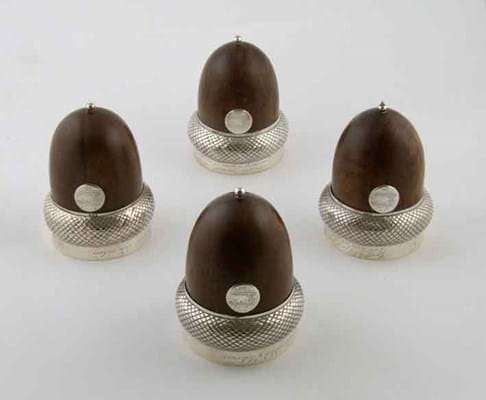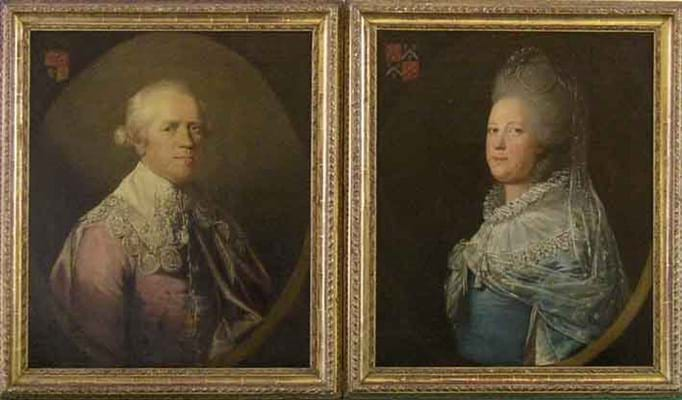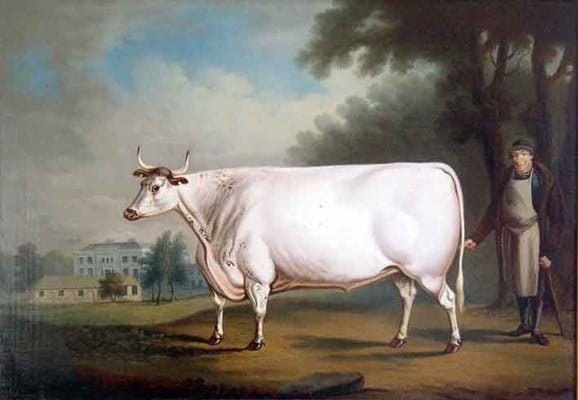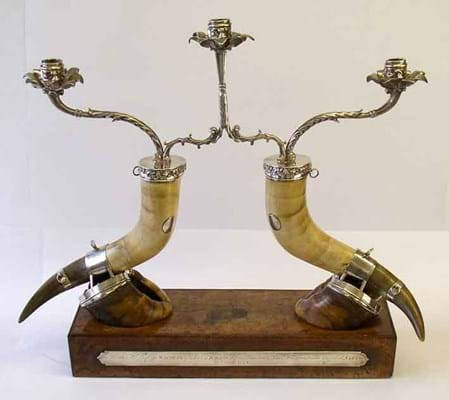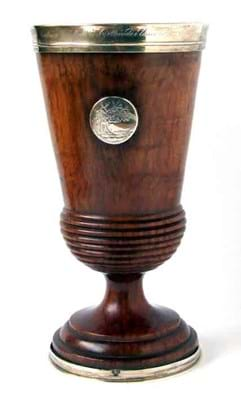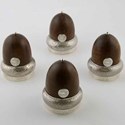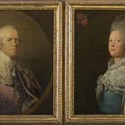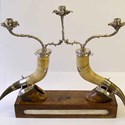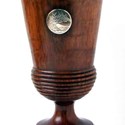From the painting of the gargantuan White Ox of Nannau to a cup fashioned from the oak of the infamous Hollow Tree of the Demon, most of the 56 works offered at Tamlyn & Son of Bridgwater on December 9 were steeped in Welsh legend.
The Vaughan family tree can be traced back to the 1st Lord of Nannau, second son of Bleddyn ap Cynfyn, King of Powys, who was thought to have been born around 1030. But now all three Merionethshire seats of this once extensive family - Nannau, Hengwrt and Rhug - have been sold, and over the past 40 years items from their collection have trickled onto the market as the surviving members of the family downsize.
Now only two sisters remain, and it was they who consigned the remaining works to Tamlyn via Robert Finan, previously of Finan & Co auctions.
Predictably, the phones at the Somerset auction house were booked up - predominantly by Welsh bidders eager to secure some of the last pieces of this renowned collection.
Fine art agent Jeremy Rye, who is based in mid-Wales, attended the sale and bought 13 of the 56 lots for various clients. He toldATGthat the Welsh are particularly passionate about collecting items relating to their country's history and that the vast majority of the items will be returning to Wales.
Offered without reserve, the sale totalled £136,000.
According to legend, in 1404 the 8th Lord of Nannau, Hywel Sele, a royalist, was killed by his rebel cousin Owain Glyndwr. His body was concealed in the hollow of an oak where it remained undiscovered for 40 years. Named Ceubren yr Ellyll - the hollow tree of the demon - it was a source of terror for the superstitious until it was felled by a storm in 1813.
Its timbers were kept by the family and fashioned into treen to commemorate dynastic events. One such celebration was the lavish banquet for the coming of age of Robert Williames Vaughan (1803-1859) in 1824, for which a set of four 4.75in (12cm) high acorn cups were turned and mounted in silver.
Each was suitably engraved with a toast in Welsh, the inscription R.W.V 25th June 1824, a picture of Ceubren yr Ellyll and the arms of Vaughan impaling Mostyn.
Hallmarked for London 1823, with the maker's mark I.R., these finely crafted cups sold at £7500 to Rye, buying for a client, who considered them good value.
A silver-mounted oak cup inscribed Ceubren yr Ellyll a Syrthiodd I lawr yr 28 a in O Orphenaf 1813 (the Hollow Tree of the Demon which fell on the 28th of July 1813) made £5800. Hallmarked for TP, London 1816, this was not deemed of the same quality and had suffered a shrinkage crack. However, it stood an impressive size at 12.5in (32cm) high.
These were typical examples of items whose value lay more in association and and history, rather than in their intrinsic and artistic worth.
Top Painting
Another piece whose value was bolstered by its association with a legend was the top lot of the sale, a painting of The Famous Nanney Ox by the Chester animal painter Daniel Clowes (1774- 1829). The white ox was slaughtered for the coming of age celebrations of Robert Williames Vaughan in 1824, producing a baron of beef weighing 165lb.
Lithographs of the painting were produced, probably to give to the 197 guests.
In addition to being one of Clowes' best - and best-known - paintings, his naïve style is currently in vogue. Mr Rye had to go to £28,000 to secure the 2ft x 2ft 10in (61 x 85cm) painting, buying on behalf of a Welsh client.
This price more than doubles the previous record for a Clowes.
Silver
The horns and hooves of the Nanney ox were mounted in silver, raised on a pollard-oak plinth and made into a substantial candelabra. The horns were detachable for use as drinking vessels and bore engraved silver shields hallmarked for London 1824. The cast three-branch candelabra, weighing 65oz, was by Joseph Cradock and William Ker Reid, and hallmarked for London 1825.
Important to its appeal were the inscriptions, one in Welsh, the other in English, on silver plaques to either side of the plinth: The Horns & Hoofs of the White Ox itself of which a Barron of One Hundred & Sixty five Pounds was roasted at Nannau 25th June 1824.
Mr Rye paid £6100 for the piece, on behalf of the same Welsh client.
Portrait
As the portrait painter of choice for the Welsh gentry in the late 18th century, William Parry (1743-1791) was sent to Italy by his chief patron, Sir Watkin Williams Wynn, 4th Baronet of Wynnstay, to paint copies of the masters.
Parry also painted portraits for the Vaughans in the 1770s and '80s, and five of these were included in the sale.
One pair, of Robert Howell Vaughan (1724-1792) and his wife Anne (1731-91), were unsigned oils on canvas measuring 2ft 6in x 2ft 1in (76 x 64cm) and were in their original gilt gesso moulded swept frames. Their provenance and freshness to the market aided a decent price for Parry - £5400, again going to Mr Rye for a client.
Wine Glasses
Items which attracted specialist trade interest, as opposed to Welsh collectors, included the set of 13, 18th century wine glasses, made for the Welsh Jacobite Society, the Cycle of the White Rose (reported on the front page of ATG No 1870). They sold for a collective £21,600.
An Elizabethan bronze measure, decorated in relief with the Royal Arms of Elizabeth I and dated 1601, measuring 5in (13cm) high, was one of very few known examples.
It had a single square baluster lug handle, bearing the scratched initials GS and IS, indicating the line of descent from Janet Salesbury of Rhûg to Sir Robert Williames Vaughan of Henwrt, Nannau and Rhûg (1803-1859), the 3rd Baronet. An unusual feature to the inside was a copper plug, thought to be an early verification mark. Underbid in the room by a Stratford-upon-Avon dealer, it sold on the phone at £7800.
The buyer's premium was 17.5%.

